Topic 5: Mix Questions
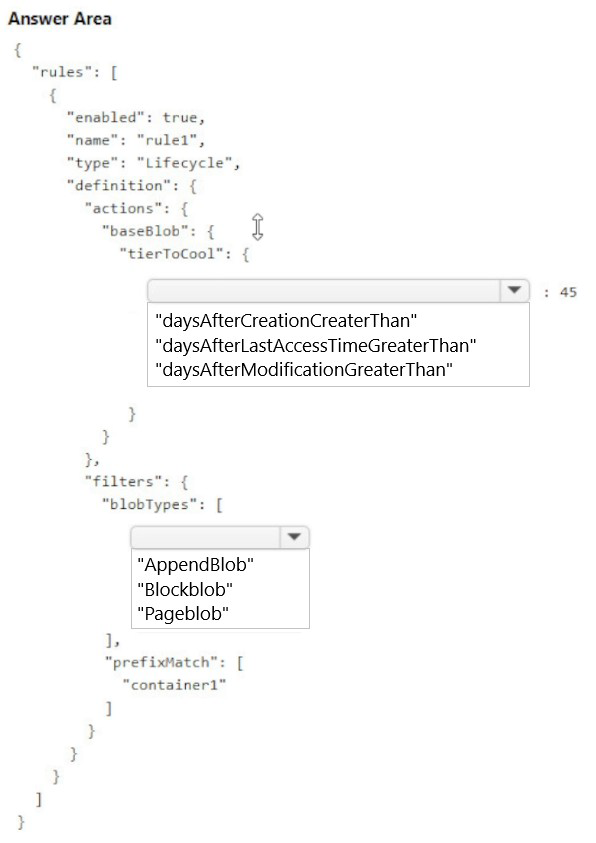
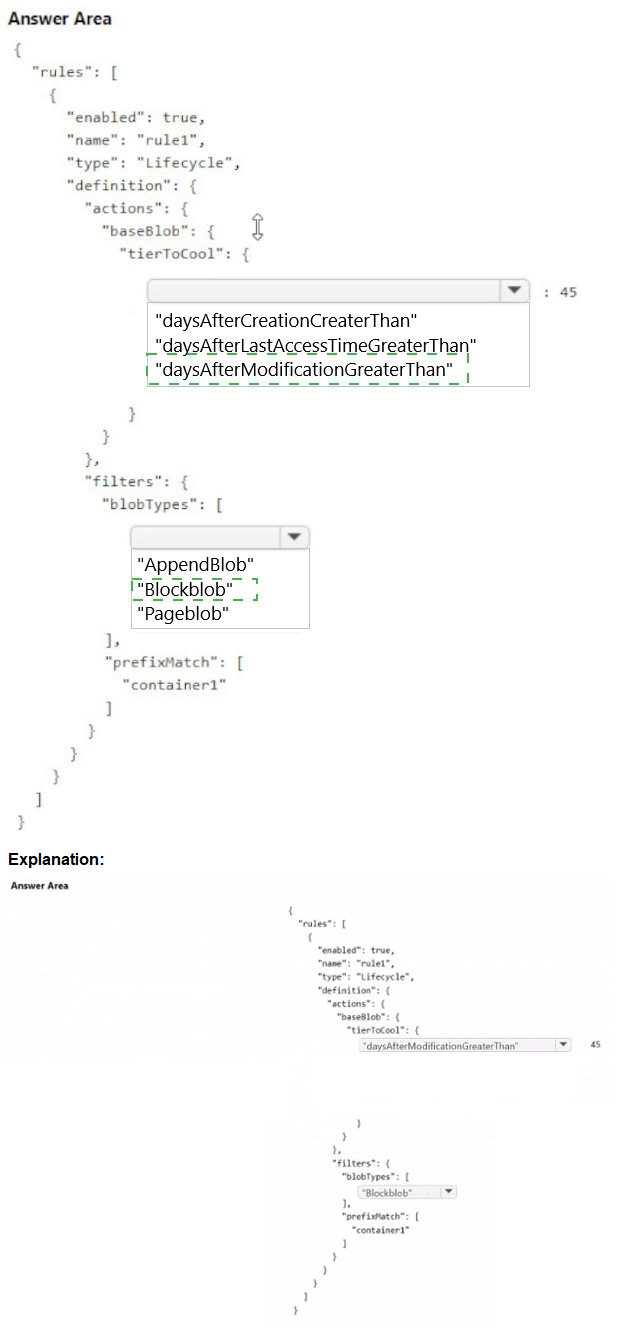
You have an Azure subscription that contains the resources shown in the following table.
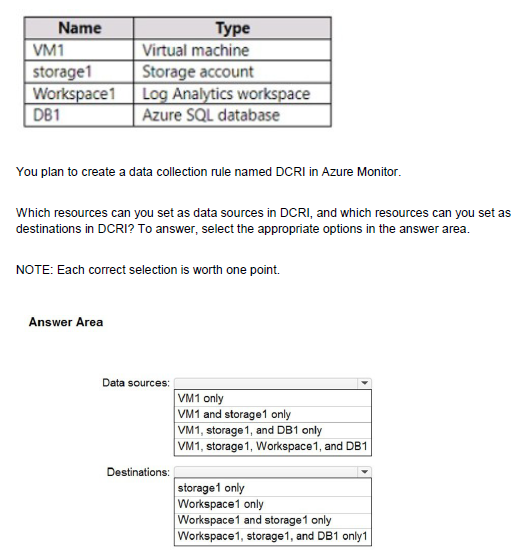
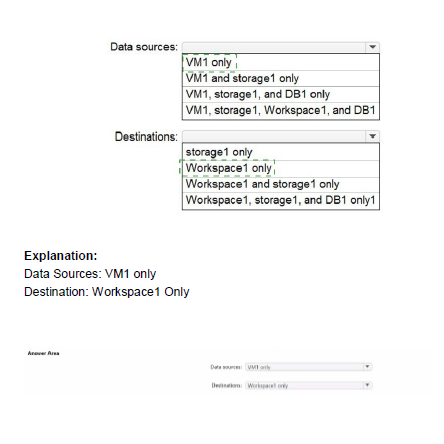
You have an Azure subscription that contains the resources shown in the following table
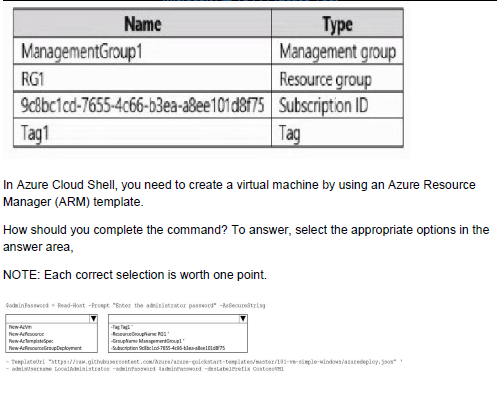

You have an Azure subscription that contains the resources shown in the following table.

A. Enable identity-based data access for the file shares instorage1.
B. Modify the security profile for the file shares in storage1.
C. Configure Access control (1AM) for share 1.
D. Select Default to Azure Active Directory authorization in the Azure portal for storage1.
A. the Cool access tier
B. the Hot access tier
C. hierarchical namespace
D. zone-redundant storage (ZRS)
E. geo-redundant storage (GRS)
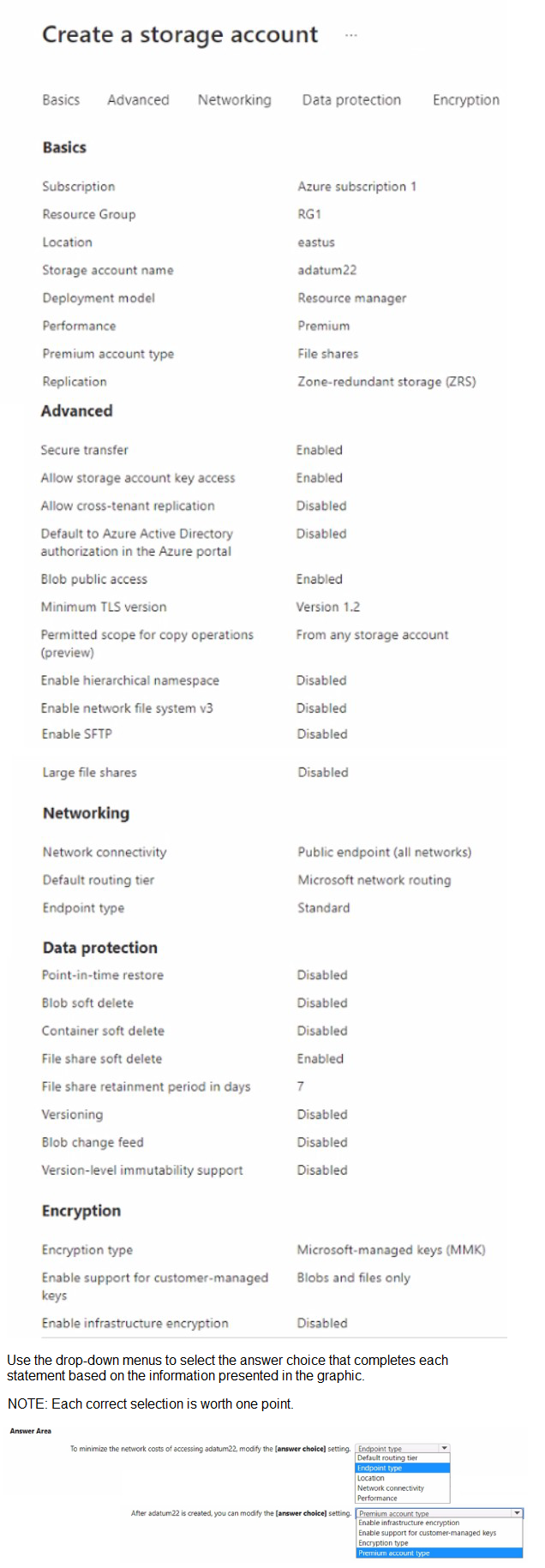
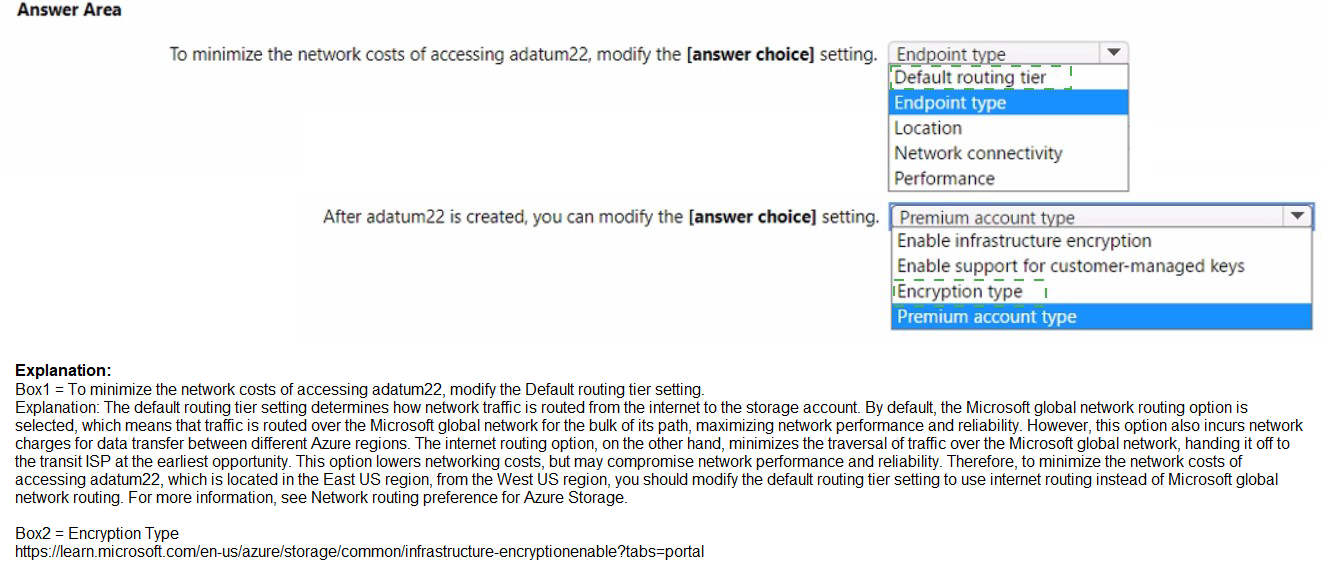

A. Swap the slots
B. Deploy the App1 update to webapp1-prod, and then test the update
C. Stop webapp1-prod
D. Deploy the App1 update to webapp1-test, and then test the update
E. Stop webapp1-test
You have the Azure virtual networks shown in the following table.

A. VNet2, VNet3, and VNet4
B. VNet2only
C. VNet3 and VNet4 only
D. VNet2 and VNet3 only
You have the Azure virtual machines shown in the following table.

A. Create a new Recovery Services vault.
B. Configure the extensions for VM3 and VM4.
C. Create a storage account.
D. Create a new backup policy.
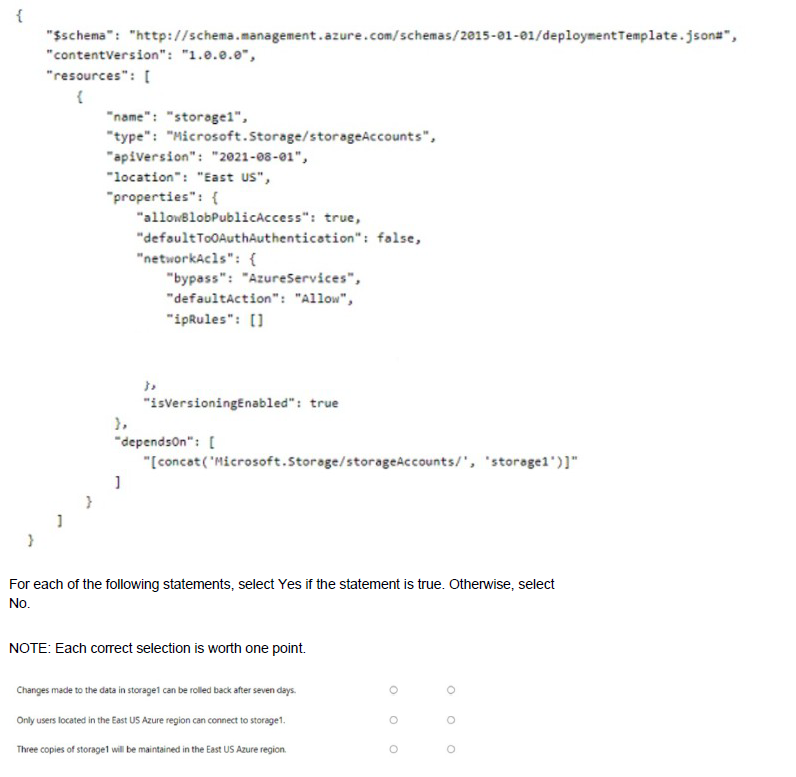

A. Standard performance with locally-redundant storage (IRS)
B. Premium performance with locally-redundant storage (LRS)
C. Standard performance with zone-redundant storage (ZRS)
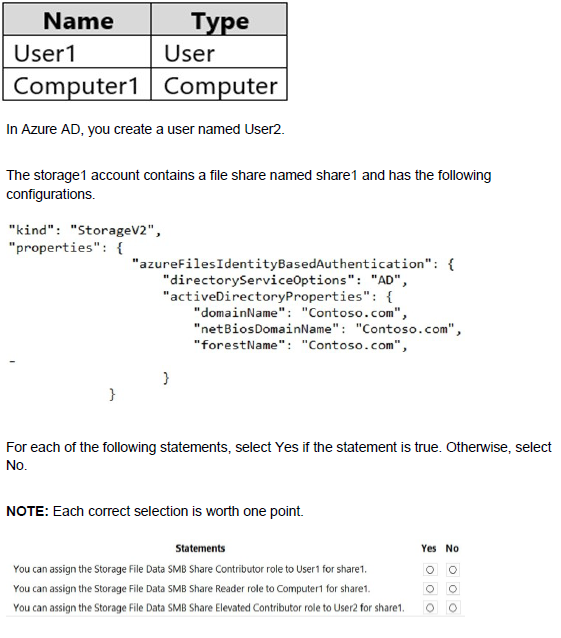
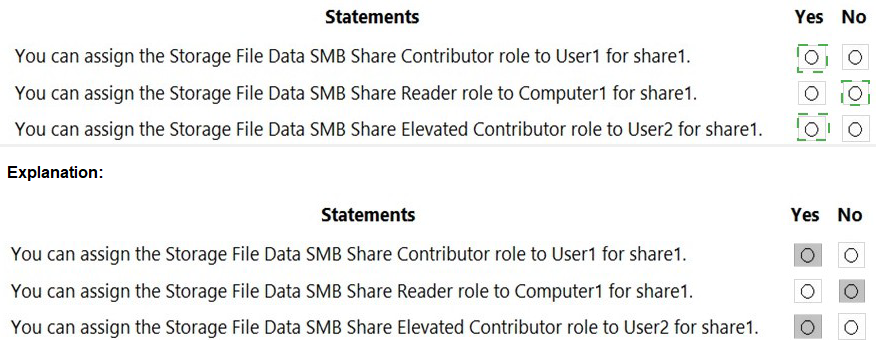
| Page 8 out of 27 Pages |
| Previous |